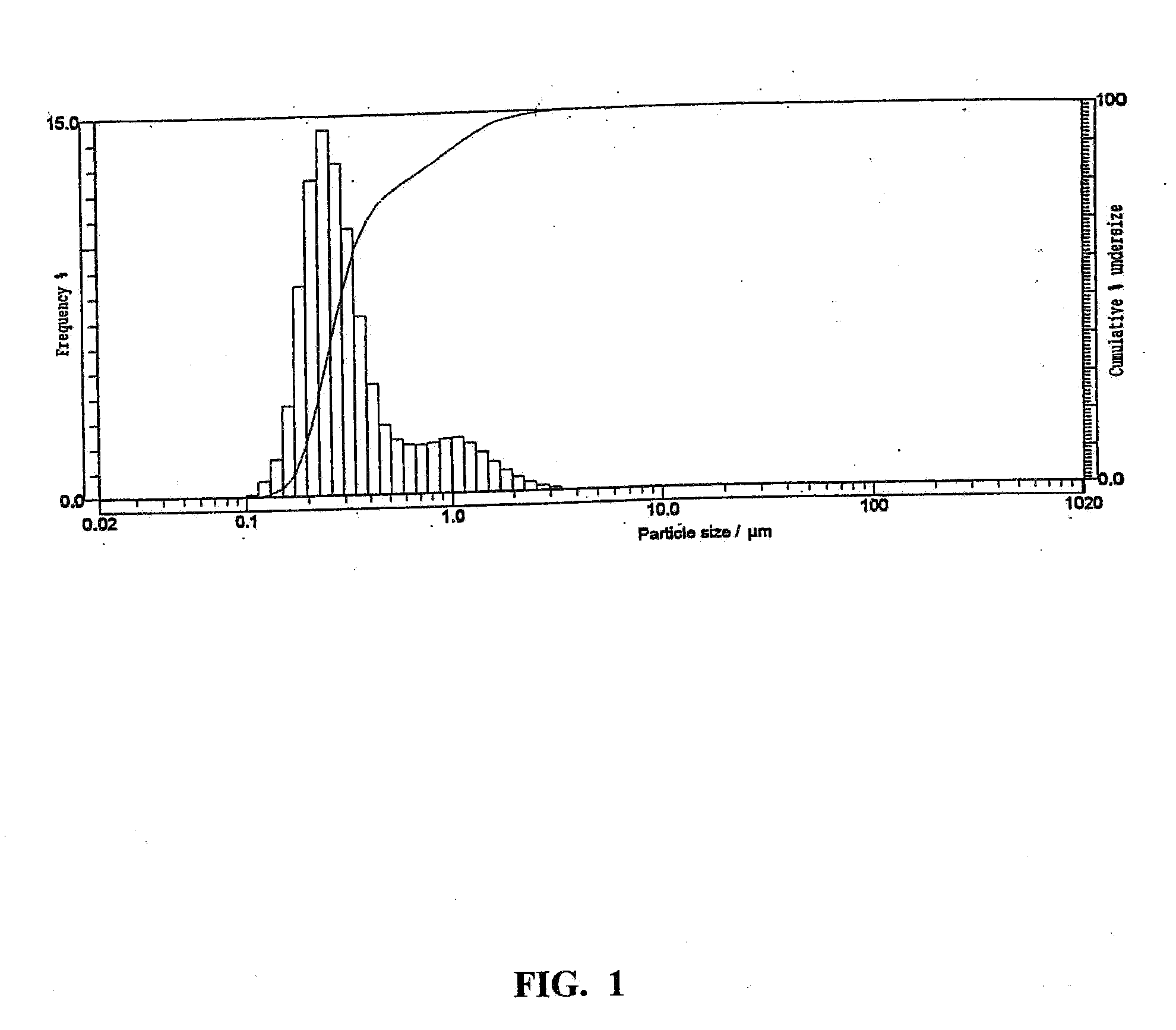Aerogel Particles and Methods Of Making Same
a technology of aerogel particles and aerogels, which is applied in the field of aerogel particles, can solve the problems of limiting the use of silica gel or aerogels, and allowing the production of smaller particles
- Summary
- Abstract
- Description
- Claims
- Application Information
AI Technical Summary
Benefits of technology
Problems solved by technology
Method used
Image
Examples
example 1
[0059]A sample of silica gel suspension was obtained from Cabot Corporation. The silica hydrosol was prepared by fast addition of a diluted sodium silicate suspension to a rapidly stirring solution comprising an acid such as HCl. The rapidly stirring solution had a pH in the range of about 5 to about 5.4, wherein a hydrogel was formed. The hydrogel was further broken up in a reaction mixture and the reaction mixture was heated. The heating step was performed under agitation. The reaction mixture was allowed to reflux for about 2.25 hours followed by cooling to about 40° C. This cooling step produced an aged silica gel suspension. The aged silica gel suspension had an approximate surface of about 350 m2 / g and a silica content of about 8%. The mean particle size of the aged silica suspension was 31 microns.
[0060]The sample was then subjected to a homogenizing process (wet milling) using the M-110EH microfluidizer available from Microfluidics International Corporation, as described abo...
example 2
[0064]A treatment reagent system was prepared by combining trimethylalkosilane, ammonia and water. The reagent system was then mixed into a suspension of Nanogel® aerogel available from Cabot Corporation in HMDS. The suspension was then fed to a stirred-media mill.
[0065]As the viscosity increased, additional treatment reagent was added to the suspension. This provided an almost immediate chemical surface treatment to the aerogel particles thereby reducing the adhesion forces between the particle surfaces, because the viscosity of the suspension is decreased, giving benefits for the ongoing milling process. The milling gave a final product having a particle size distribution in the submicron range, having few or no particles larger than 1 micron.
example 3
[0066]A treatment reagent system was prepared by combining hexamethyldisilazane (HMDZ) and water. The reagent system was then mixed into a suspension of Nanogel® aerogel available from Cabot Corporation in HMDS. The suspension was then fed to a stirred-media mill.
[0067]As the viscosity increased, additional treatment reagent was added to the suspension. This provided an almost immediate chemical surface treatment to the aerogel particles thereby reducing the adhesion forces between the particle surfaces, because the viscosity of the suspension is decreased, giving benefits for the ongoing milling process. The milling gave a final product having a particle size distribution in the submicron range, having few or no particles larger than 1 micron.
PUM
| Property | Measurement | Unit |
|---|---|---|
| particle size | aaaaa | aaaaa |
| mean particle size | aaaaa | aaaaa |
| densities | aaaaa | aaaaa |
Abstract
Description
Claims
Application Information
 Login to View More
Login to View More - R&D
- Intellectual Property
- Life Sciences
- Materials
- Tech Scout
- Unparalleled Data Quality
- Higher Quality Content
- 60% Fewer Hallucinations
Browse by: Latest US Patents, China's latest patents, Technical Efficacy Thesaurus, Application Domain, Technology Topic, Popular Technical Reports.
© 2025 PatSnap. All rights reserved.Legal|Privacy policy|Modern Slavery Act Transparency Statement|Sitemap|About US| Contact US: help@patsnap.com


